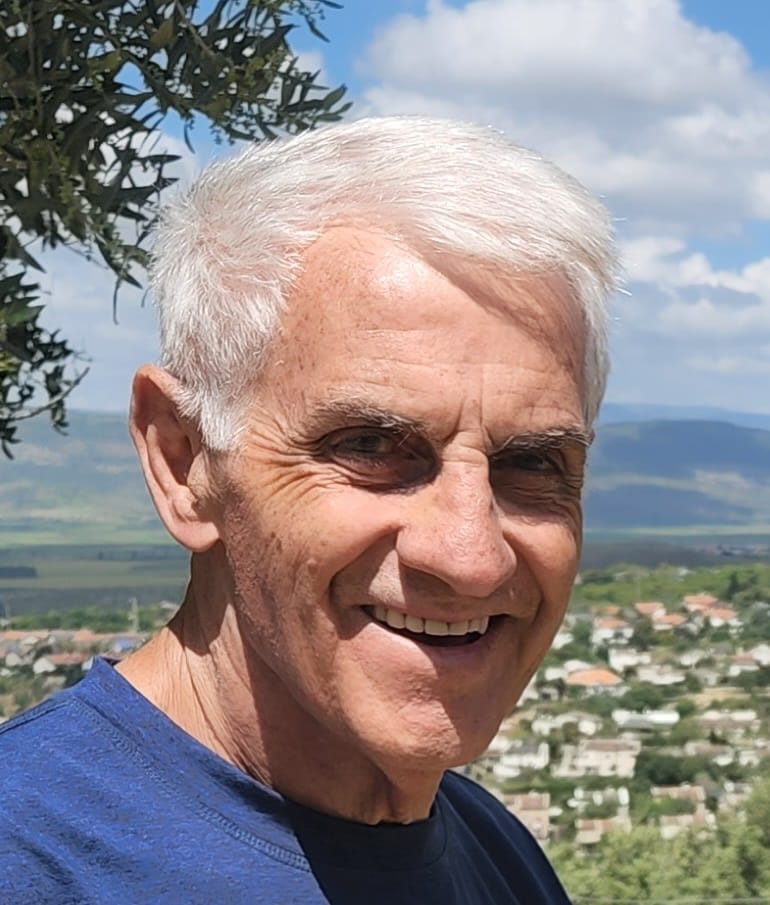- Home
- Rokdim Nirkoda 119
- The Smile of Sedi z”l… Has Fallen Silent
Our Sedi, the man and the legend, passed away this past summer, leaving behind a long legacy of masterpieces that will accompany us for generations.
Sedi’s life story is incredible – a child who grew up in an orphanage in Israel and made it all the way from serving as a paratrooper to becoming the director of a psychiatric hospital. A wonderful story about a child who bought a harmonica with his hard-earned money and understood even then that only music and dance could make him forget his loneliness and sadness.
The story of Sedi, the legendary dance leader and choreographer, perhaps begins with a smile… Our Sedi had a constant and charming smile that accompanied him from the day he was born. When he spoke, he smiled; when he danced, he smiled. Among his outstanding personal qualities, besides being a wonderful dance leader and choreographer, he was a person with a big heart and a generous soul, pleasant to be around, and with an endless capacity for giving to his family and many friends. A person whose company was a great joy and pure delight of laughter and entertainment, just from hearing his clever stories told in a style and accent unique to him.
It seems that none of his many friends and admirers knew that the dance leader who entertained them with so many smiles, so much talent and youthful joy, was hiding a life story full of sadness within him.
Sedi, Seadia Amishai, was born in the city of Aden in Yemen in 1939. His father passed away a month before he was born. At the age of two, he walked from Yemen to Israel along with his grandparents. His mother stayed in Yemen with his older sister. In Israel, he immigrated and settled in the “Ezra and Bitzaron” neighborhood in Rishon LeZion.
After his military service in the paratroopers and his release from the IDF, he was sent, with the help of the Unit for Guiding Discharged Soldiers, to a seminar at Beit Berl, where he studied and completed a youth counselor course. After completing the course, he was sent to open youth clubs in Kiryat Shmona, where he also worked as a dance instructor, choreographer, and director of dance troupes.
During his time as a youth counselor, he met his wife, Margalit, and they got married when he was 24! They had three children: Vered, Tal, and Chen, eight grandchildren, and three great-grandchildren. Sedi and Margalit were in love and happily married for 63 years!
At that time in Kiryat Shmona, the family struggled to live a normal and peaceful life, mainly due to the difficult security situation prevailing on the Lebanese border: Kiryat Shmona in the 1970s was scarred by constant Katyusha shelling and terrorist infiltrations.
In these difficult years, Sedi worked as a secretary for maternity hospitals, child development centers, anti-malaria programs, and more. Simultaneously, he was also the dance instructor and choreographer of Kiryat Shmona and the first to establish a dance troupe there. The troupe, under his direction, traveled to Columbus, Ohio, USA in 1978 and honorably represented the city with an impressive tour among the local Jewish host community, as part of a cultural exchange program between sister cities.
Years later, when Sedi was asked, “What is dance to you?”, he replied: “Dance is life, the air we breathe. Dancing immerses you in a world of colors, joy, and immense pleasure. It also makes you forget the worries of everyday life, and fills you with endless happiness and joy.”
Later, Seadia decided to move on to a more senior position at the Ministry of Health: administrative management at the Pardes Hanna Geriatric Center. He sent in his application and was accepted. And thus, the family left Kiryat Shmona and moved to live in Hadera.
Sedi worked in Pardes Hanna for 18 years, and from there he went on to manage the forensic psychiatric hospital (near “Sha’ar Menashe” hospital in Pardes Hanna) for about 10 years, and then he retired.
In parallel with these managerial roles, Sedi had never stopped serving as a dance leader and creating highly regarded masterpiece dances, and even founded and directed dance companies in Hadera, Hof HaCarmel, Menashe, Afula, Yavne’el, and more.
Sedi continued to dance in sessions with his wife Margalit, to lead and teach his dances in sessions and instructor courses across the country, and as a guest choreographer at numerous dance camps abroad.
Sedi created about 30 dances, was one of the creators of the classical dances that grew here, and one of the fathers of ethnic folklore in Israel. Most of his dances have become timeless treasures and will accompany us for generations.
We will miss him and continue to preserve the legacy he built.
May his memory be a blessing!









Comments
התראות